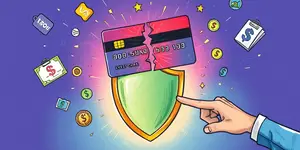
In today’s fast-paced world, every transaction offers an opportunity to save. From daily groceries to travel bookings, savvy consumers can transform routine spending into valuable returns. By understanding the nuances of modern loyalty programs and strategically leveraging offers, shoppers can maximize your savings with every purchase and feel empowered at the checkout.
With a wide array of apps, credit cards, and digital wallets competing for attention, the cash back landscape has never been more vibrant. This comprehensive guide will explore market trends, consumer behaviors, proven tactics, and emotional drivers to help you become the ultimate Cash Back King.
The global loyalty ecosystem is booming. Valued at global cash back and rewards market $4.14 billion in 2025, it’s projected to nearly double by 2034, reaching $7.73 billion at a CAGR of 7.2%. North America currently dominates thanks to widespread smartphone adoption and mature e-commerce infrastructure, while Asia-Pacific emerges as the fastest-growing region.
These figures illustrate how brands are investing more in loyalty to capture consumer attention. As new fintech startups emerge and governments promote digital payments, opportunities to earn rewards will expand even further.
Cash back remains the top choice for 53% of U.S. consumers, outpacing coupons and membership perks. Yet, while the average American belongs to 16.7 loyalty programs, they actively engage with only about six to seven.
When evaluating dining programs, consumers highlight a desire for clear, attainable benefits. Key preferences include:
Higher-income consumers (earning $200K+) engage at a rate of 33%, while those in lower brackets participate less frequently. However, 55% of all consumers still “almost always” or “frequently” sign up when prompted, demonstrating a strong appetite for value.
Unlocking maximum rewards requires a multi-pronged approach. By combining credit card perks, specialized apps, and digital wallets, shoppers can stack offers and boost overall earnings.
Regularly reviewing bonus categories, tracking rotating offers, and staying alert for promotional periods can compound your returns over time.
Today’s loyalty programs transcend simple point systems. Leading brands are focusing on personalization and gamification strategies to build deeper connections. Nearly 57% of companies tailor rewards to individual spending patterns, while 45% plan to invest in game-like elements that make earning fun.
Experience-based rewards—such as exclusive events, travel upgrades, and immersive brand collaborations—are also on the rise. Around 34% of brands now offer perks beyond cash, enticing users with unforgettable moments and fostering stronger emotional ties.
While chasing rewards, it’s essential to protect your personal and financial data. A secure, seamless, and user-friendly experience is the bedrock of trustworthy loyalty programs.
Never share sensitive account information or card numbers unnecessarily. By verifying security protocols, you can ensure peace of mind as you rack up rewards.
Effective loyalty schemes tap into fundamental human emotions. Consumers who feel they are “winning” with every purchase experience empowerment and satisfaction. Data shows that after redeeming a reward, 62% of members buy more items, and 47% choose upgrades or add-ons.
This “feel-good” factor drives repeat engagement. Brands that weave compelling narratives and personalized touches into their programs can ignite a sense of belonging and achievement, making every interaction memorable.
Mastering cash back is both an art and a science. By staying informed about market developments, understanding consumer psychology, and applying tested tactics, you can turn everyday shopping into a lucrative endeavor.
As you adopt simple, transparent, and rewarding programs, chase bonus categories, and embrace cutting-edge trends like gamification, you’ll be well on your way to claiming the crown as a true Cash Back King. Remember, each swipe, scan, and click is another step toward maximizing your financial freedom.
References













